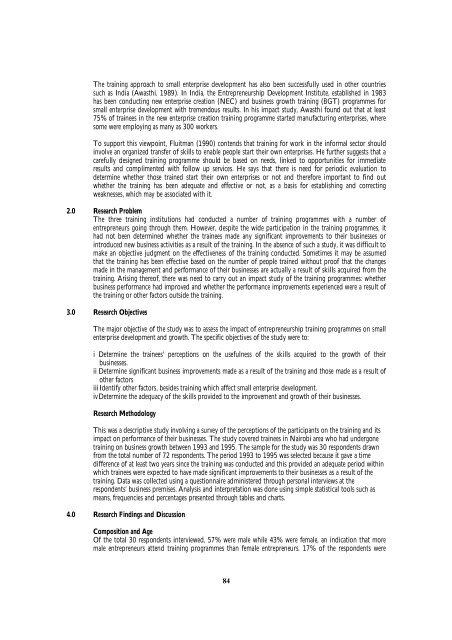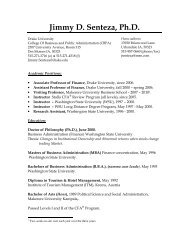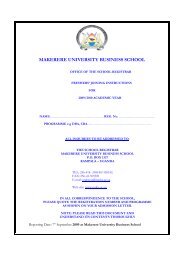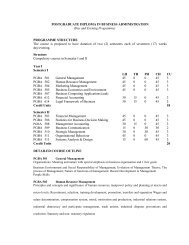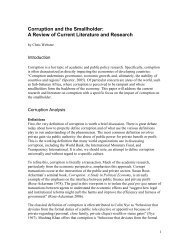13th Annual International Management Conference Proceeding
13th Annual International Management Conference Proceeding
13th Annual International Management Conference Proceeding
You also want an ePaper? Increase the reach of your titles
YUMPU automatically turns print PDFs into web optimized ePapers that Google loves.
The training approach to small enterprise development has also been successfully used in other countries<br />
such as India (Awasthi, 1989). In India, the Entrepreneurship Development Institute, established in 1983<br />
has been conducting new enterprise creation (NEC) and business growth training (BGT) programmes for<br />
small enterprise development with tremendous results. In his impact study, Awasthi found out that at least<br />
75% of trainees in the new enterprise creation training programme started manufacturing enterprises, where<br />
some were employing as many as 300 workers.<br />
To support this viewpoint, Fluitman (1990) contends that training for work in the informal sector should<br />
involve an organized transfer of skills to enable people start their own enterprises. He further suggests that a<br />
carefully designed training programme should be based on needs, linked to opportunities for immediate<br />
results and complimented with follow up services. He says that there is need for periodic evaluation to<br />
determine whether those trained start their own enterprises or not and therefore important to find out<br />
whether the training has been adequate and effective or not, as a basis for establishing and correcting<br />
weaknesses, which may be associated with it.<br />
2.0 Research Problem<br />
The three training institutions had conducted a number of training programmes with a number of<br />
entrepreneurs going through them. However, despite the wide participation in the training programmes, it<br />
had not been determined whether the trainees made any significant improvements to their businesses or<br />
introduced new business activities as a result of the training. In the absence of such a study, it was difficult to<br />
make an objective judgment on the effectiveness of the training conducted. Sometimes it may be assumed<br />
that the training has been effective based on the number of people trained without proof that the changes<br />
made in the management and performance of their businesses are actually a result of skills acquired from the<br />
training. Arising thereof, there was need to carry out an impact study of the training programmes: whether<br />
business performance had improved and whether the performance improvements experienced were a result of<br />
the training or other factors outside the training.<br />
3.0 Research Objectives<br />
The major objective of the study was to assess the impact of entrepreneurship training programmes on small<br />
enterprise development and growth. The specific objectives of the study were to:<br />
i Determine the trainees' perceptions on the usefulness of the skills acquired to the growth of their<br />
businesses.<br />
ii Determine significant business improvements made as a result of the training and those made as a result of<br />
other factors<br />
iii Identify other factors, besides training which affect small enterprise development.<br />
iv Determine the adequacy of the skills provided to the improvement and growth of their businesses.<br />
Research Methodology<br />
This was a descriptive study involving a survey of the perceptions of the participants on the training and its<br />
impact on performance of their businesses. The study covered trainees in Nairobi area who had undergone<br />
training on business growth between 1993 and 1995. The sample for the study was 30 respondents drawn<br />
from the total number of 72 respondents. The period 1993 to 1995 was selected because it gave a time<br />
difference of at least two years since the training was conducted and this provided an adequate period within<br />
which trainees were expected to have made significant improvements to their businesses as a result of the<br />
training. Data was collected using a questionnaire administered through personal interviews at the<br />
respondents’ business premises. Analysis and interpretation was done using simple statistical tools such as<br />
means, frequencies and percentages presented through tables and charts.<br />
4.0 Research Findings and Discussion<br />
Composition and Age<br />
Of the total 30 respondents interviewed, 57% were male while 43% were female, an indication that more<br />
male entrepreneurs attend training programmes than female entrepreneurs. 17% of the respondents were<br />
84


